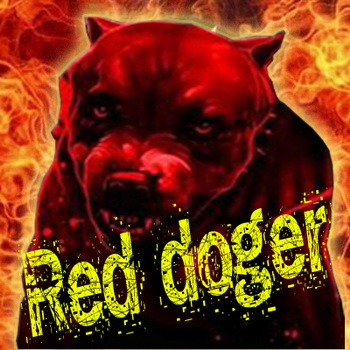ยินดีต้อนรับครับ
ขอแนะนำให้ทุกท่าน สมัครสมาชิก เพื่อป้องกันการแอบอ้างชื่อครับ
หมวด
- หัวข้อทั้งหมด36,995
- General Issues กระทู้ทั่วไป27,550
- All Gangster กลุ่ม ชมรม คอก ฟาร์ม87
- กฎระเบียบ การขึ้นทะเบียนสุนัข ABC9
- Dog for Sale ตลาดซื้อขาย7,857
- Products & Service สินค้าและบริการ407
- ผลิตภัณฑ์/อาหารสุนัข26
- Activities กิจกรรม138
- Knowledge สาระ880
- Hit Questions/ คำถามยอดฮิต10
- สมาชิกใหม่อยากให้อ่าน !!31
Mark Mafia
-
เทคนิคการให้อาหารสุนัข
74
-
พิตบูลกำลังจะกลายเป็นหมาจร !!
96
-
เปิดตัว เดอะ เฮอร์ริเคน ดุ๊ก
34
-
ก่อนลงขาย ขอความร่วมมือจากส...
213
-
เปิดตัว เดอะ เรด กราม ล๊อค
199
-
ช่วยแนะนำหน่อยคะ... เจ้าหมา...
49
-
มือใหม่อยากให้อ่าน
64
-
เล่นบอร์ดนี้ ให้มีความสุข
60
-
Welcome to Pitbull Cafe'
1118
-
ทำไมถึงต้อง พิตบูล
47
-
Pitbullzone Radio สถานีวิทย...
59
-
เปิดตัว The Red Warrior Dae...
79
-
ผลิตภัณฑ์สร้างกล้ามเนื้อ "พ...
527
-
คำคม วลีเด็ด มาร์ค มาเฟีย
49
-
ประสบการณ์จริงของการเลี้ยงห...
105
-
มาร์ค มาเฟีย อยากบอก !!!
81
-
รวมคลิป ฝึกหมาจาก PitbullZo...
43
-
Gramlock , the first time o...
195
-
ถึงมือใหม่ทุกท่าน ด้วยความป...
105
-
นโยบาย ปี2555 ของเว็บ Pitbu...
62
-
เป็นไปได้ไหม ???
165
-
ความแตกต่างของเอฟวันแต่ละรุ่น
79
-
เรียนมาเพื่อแจ้งให้ทราบ
41
-
กองทุน Pitbullzone (ABC)
43
-
ชะตาฟ้าหรือจะสู้มานะตน
133
-
รักหมาจริงหรือว่ารักตัวเองก...
128
-
สินค้าที่ระลึก Pitbullzone
9
-
ประวัติพิทบูล นักสู้ตลอดกาล...
96
-
ลงรูปครับ(สำหรับคนไม่รู้)
6
-
French-Bulldog กิน F1 ได้มั...
78
-
Proudly to present The Stro...
64
พันPresa Canario มีจําหน่ายที่ใหนบ้างครับ
-
อยากลองเลี้ยงพันนี้มั่งอะครับใครทราบหรือมีมั่งครับไฟล์แนบ

02-19-05%20060%20presa%20canario.jpg 78K -
โลตัส
-
เค้าถามดีๆก้อกวนส้นฃะ
-
จวยดี
-
ผมว่าบ้านเราหน้าจะไม่มีนะ
-
เห็นบอกว่า คอก มีอยู่ที่จังหวัดน่าน นะ
น่าสนใจเหมือนกัน แต่อยากรู้ว่าชอบเห่า
และน้ำลายเยอะอ่ะป่าว
พิทฯ นี่ตรงสเป็คที่สุดเลย ไม่เห่าพร่ำเพื่รอ
น้ำลายไม่เยอะ -
ฟาร์ม ขุนน่านเคยมีครับ แต่เขายกให้คนอื่นไปละ
นิสัยกัดด๊ะ -
เคยไป ไหว้พระธาตุ ที่ นครศรีธรรมราช แล้ว หิว แวะไปกินข้าว ร้าน ลึกลับ ออกป่าๆหน่อยๆ
เหนเจ้าของร้านจูงอยู่ สูง ประมาณ ท่ายืน นี่เลย 175 แน่ นอน
น่าเกรงขาม กล้าม บึก ที่ สำคัญ เหน เค้าบอก ไม่เอา ใคร นอกจากคนไห้ข้าว -
แต่
ผมหว้า หน้า ตาก็ คล้าย พิทบูล รุ่น แรกๆ นะครับ
ไม่รู้ ใช่ ป่าว รอ ผู้รู้ดีกว่า -
175 เลยเหรอ ท่วมหัวผมอีก
โหว ยังงี้ต้องหามาขี่:025: -
The breed is originally from the Canary Islands in the 1700s, notably Gran Canaria. Its exact ancestry is unknown, but enthusiasts believe that the Perro de Bardino Majorero, an established farm dog from the Canary Islands, was crossed with the Mastiff and other English dogs brought to the Islands by visitors and colonists, creating the foundation for the modern Presa Canario.[1]
Presa type guard and catch dogs are mentioned in historical documents of the 16th and 17th centuries. It is believed that the Perro de Presa Canario was created during the 18th century for the purpose of property and flock guarding, the holding and driving of livestock, and exterminating wild or stray dogs.[2] The breed was also used for dog fighting, a tradition the English settlers transplanted along with their Mastiff and Bulldog breeds. Canary Islanders consider these fights "honor fights" and not the sole purpose of the animal. Presa type dogs were referred to as the "perro de la tierra" or "dog of the land".
The breed became nearly extinct after dog fighting was outlawed in the 1940s, even though clandestine fights were known to continue during the next decade. Additionally the German Shepherd Dog, the Doberman Pinscher, and the Great Dane were introduced to the island with these breeds becoming popular with dog enthusiasts.[1] The breed was revived in the 1970s with the help of several crosses by various breeders.[2] This period is generally known as the reconstruction of the breed, with atypical specimens becoming less common.
ลองไปหาข้อมุลมาให้ครับ ไม่น่าถึงนะครับ 175 ถ้ามีจริงคงกลายพันธ์รึป่าวครับ
[edit] Description
[edit] Appearance
A portrait showing the breed's distinctive head.The Presa Canario is a large sized dog with a thick and muscular body.[3] The head is broad, massive, square, and powerful. Proper head and good expression are part of the breed standard, and are manifest in the best breed specimens. The ears are normally cropped both to create a more formidable expression, and to prevent damage while working with cattle. If cropped the ears stand erect. In countries where ear cropping is banned the ears are close fitting to the head, they hang down and should be pendant or "rose" shaped. The lips are thick and hang in an inverted V where they join; the flews may be slightly loose. The interior lips are dark.[4]
Males average between 23 to 26 inches (58 to 66 cm) at the withers with a minimum weight of 100 pounds (45 kg). Females average between 22 to 25 inches (56 to 63 cm) at the withers with a minimum weight of 85 pounds (39 kg).[2] Very high weights could lead to a number of health problems. Too much weight is also known to compromise the dog's athleticism and working ability.[citation needed]
The breed is also characterized by a sloping topline (with the rear being slightly higher than the shoulders). Another characteristic of the breed is the shape of the paws (cat foot) and the catlike movement of the animal. The body is mesomorphic, that is, slightly longer than the dog is tall, contributing to the feline movement. The Presa should be powerful, balanced, and imposing in appearance. It is heavily built, but able to move with great athleticism -
175นี่สงสัยโดดใส่ที่ได้ไปเกิดใหม่แหงมๆ:012:
-
สนใจพันธ์นี้อยู่เหมือนกันใครมีบอกด้วยนะครับ
-
( คุรlebbonไม่ไช่ม้าจะมาขี่ อะ ขําๆนะครับ ) ลองพิมในกูเกิลดิใหญ่ๆเยอะเลยครับ preresa canario
-
ไม่ใช่ครับพี่ชาย จะเอาไว้เฝ้าบ้านครับพี่









